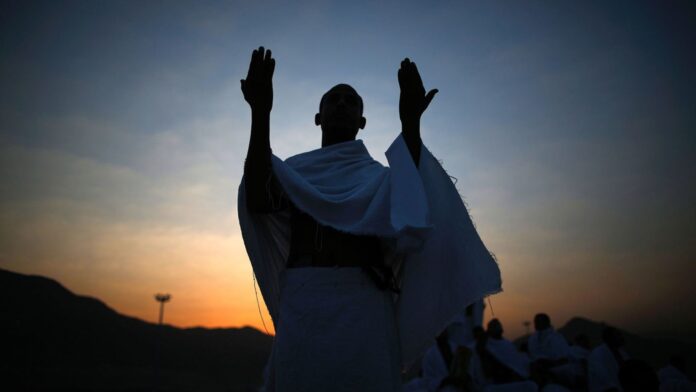Introduction:
People have been visiting holy places in search of divine favours, inner calm, and spiritual enlightenment from ancient times. Deep religious and cultural value inherent in holy locations draws pilgrims and devotees from many walks of life. Visiting holy places, either a temple, church, mosque, monastery, or a significant nature site, is regarded as a transforming experience that ties people to the divine and fortifies their faith.
The Spiritual Significance of Visiting Holy Places:
Strengthening Faith and Devotion:
People travel to holy places mostly in order to strengthen their faith and commitment. Standing in a location where saints, prophets, or spiritual leaders formerly lived or prayed helps one to experience divine presence, therefore enhancing their faith commitment and belief.
Many people are inspired to reconnect with their religious traditions by the great spiritual energy they experience in these places. Prays, ceremonies, or meditation done in a sacred site strengthens spiritual discipline and increases dedication. Find the best Umrah packages 2025 UK and start your spiritual journey of Mecca and Madina for inner peace.
A Path to Inner Peace and Healing:
Holy places are connected with spiritual healing rather regularly. Many come to them looking for help with emotional weight, physical illness, or mental stress. The calm environment of a holy site allows visitors to discover inner serenity and clarity by means of a release from daily challenges.
There are some locations thought to offer amazing therapeutic qualities. For instance, the waters of the Ganges River in India and the Lourdes shrine in France are seen as spiritually cleansing and draw thousands of UK pilgrims looking for both physical and emotional recovery.
A Pilgrimage of Self-Discovery:
Many times, visiting a holy site is considered a pilgrimage—a trip towards one’s inner self as much as a physical destination. It offers a chance for introspection, self-evaluation, and personal development.
People enter a realm of spiritual reflection when they depart from their daily life to visit a holy site. The encounter motivates people to reconsider their decisions about their lives, ask pardon, and welcome personal development. Many people come back from their trip feeling more committed to their spiritual road and with fresh goals.
Receiving Divine Blessings and Guidance:
Many religious systems hold that visiting a holy site results in heavenly protection and blessings. Devotees seek spiritual direction and favour from the divine whether by prayers, offerings, or ceremonial actions.
Many societies hold that prayers and wishes are more likely to be granted near a holy site. In both their personal and professional life, they bring hopes for answers to challenges, direction, or divine favour.
A Reminder of Spiritual Heritage:
Holy places are rich in religious history and cultural legacy. Seeing these locations helps people to connect with their spiritual roots and get a better awareness of the customs of their faith.
For instance, while a pilgrimage to Jerusalem gives Christians insight into the life of Jesus, a visit to Mecca reminds Muslims of the road taken by Prophet Muhammad. Hindu followers visiting Varanasi or Bodh Gaya also have a strong relationship with the lessons of their spiritual forebears.
Inspired to follow the values and lessons of their respective traditions, these holy places act as live reminders of faith, sacrifice, and dedication for visitors.
The Power of Collective Spiritual Energy:
Surrounded by thousands of people praying and meditating together, there is a really inspiring effect. Holy places draw big numbers of followers, therefore generating a collective spiritual energy in the surroundings.
Seeing big groups of people praying together often helps many individuals to feel united and with spiritual presence. Others’ shared faith and dedication serve to support their own convictions and foster a feeling of spiritual group membership.
Strengthening the Mind and Spirit:
Long trips, harsh weather, or rigorous rituals—the difficulties of a pilgrimage test someone’s faith, endurance, and patience. These challenges teach resilience and dedication, therefore strengthening the mind and spirit.
For instance, in Hinduism, those who walk great distances barefoot to temples or engage in extreme fasting gain discipline and self-control. Likewise, Christian travellers on the Camino de Santiago in Spain face physical challenges that they see as a kind of spiritual cleansing. Overcoming these difficulties improves self-control, thankfulness, and a closer relationship with God.
Conclusion:
Seeing holy places has great spiritual meaning and presents a special chance for self-examination, healing, and divine connection. It is a transforming trip that improves faith, sharpens the mind, and offers inner calm, not only a religious activity.
From blessings to knowledge, from letting go of worldly ties to discovering answers to life’s problems, holy travels profoundly affect the soul. They inspire people of the need of humility, thankfulness, and loyalty in their spiritual road.
Whether one visits a temple, church, mosque, or natural sacred spot, the experience of doing so is always enlightening. It is a necessary component of spiritual life since it clarifies, renewing, and strengthens the link to the divine.








